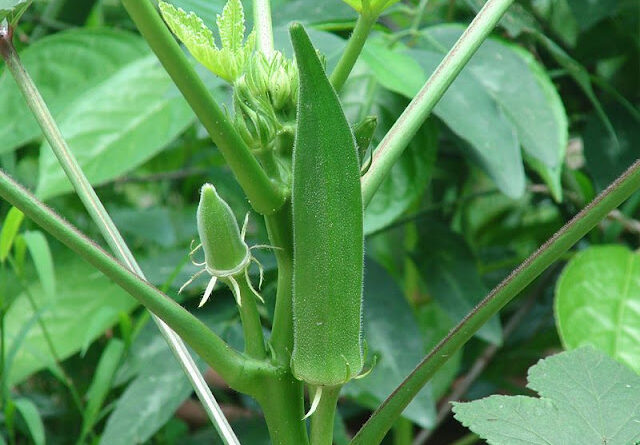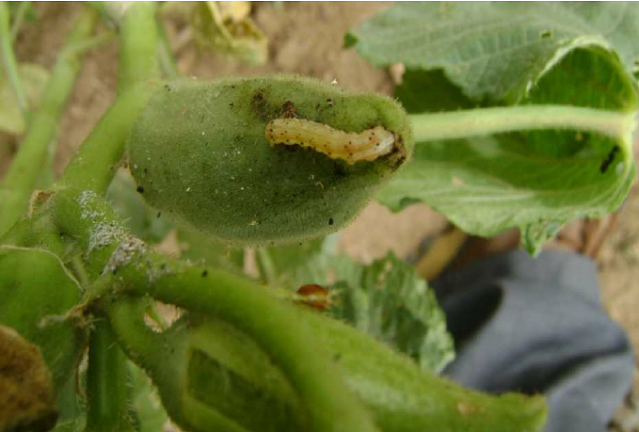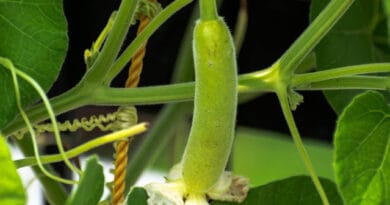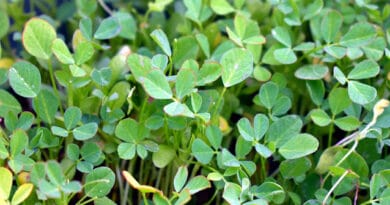Cultivation of Okra ; Abelmoschus esculentus (L) Moench.
Okra (Abelmoschus esculentus (L) Moench) is a warm-season flowering plant that belongs to the family Malvaceae. It is cultivated throughout tropical and warm-temperate regions of the world for its edible green fruit. It is also known as lady’s finger, okra, bamia, and gumbo.
Okra crop duration ranges from 90 to 100 days, and the ideal temperature for its growth ranges from 25 to 30 degrees Celsius
Nutritive Value of Okra:
According to the U.S. Department of Agriculture (USDA) National Nutrient Database, one cup of raw okra, weighing 100 grams (g), contains
| Typical values | Per 100 g | Typical values | Per 100 g |
| Calories | 33 kcal | Folate | 60 mg |
| Carbohydrates | 7.45 g | Thiamin | 0.2 mg |
| Dietary fiber | 3.2g | Riboflavin | .06 mg |
| Protein | 1.93g | Niacin | 1 mg |
| Fat | 0.i9g | Calcium | 81 mg |
| Water: | 90.17 g | Iron | 0.8 g |
| Vitamin A | 375 IU | Magnesium | 57 mg |
| Vitamin C: | 23 mg | Phosphorus | 63mg |
| Vitamin K | 31.3 mg | Potassium | 299 mg |
| Vitamin B6 | 0.215 mg | Sodium | 7 mg |
| Zinc | 0.6 mg |
Soil Requirement for Okra Cultivation:
Okra cultivation can be done in a wide range of soils, but the sandy loam soil rich in organic matter with an optimum pH range of 5.8 to 7 is most suitable for okra cultivation. Okra cultivation yields well in heavy soil with a good drainage system.
Popular Varieties of Okra:
Pusa Makhmali, Released by IARI, produces a light green fruit. extremely vulnerable to YVMV, or yellow vein mosaic virus.
Punjab number 13;It is suitable for spring-summer cultivation. It is a medium-length, light-green fruit variety that have five ridges. prone to mosaic formation.
Punjab Padmini.The fruits have five ridges, are dark green and hairy, grow quickly, and stay soft for longer. takes 55–60 days to mature after seeding. resistant to YVMV, or yellow vein mosaic virus. IARI, New Delhi, released
Pusa Sawani: It can be grown during the rainy season, spring, and summer. When the fruits are ready to be sold, they are dark green, smooth, have five ridges, and measure roughly 10 to 12 cm in length. The crop reaches maturity in 50 days after seeding. Yields range from 12 to 15 on average.
Okra Seeds and Their Cultivation
February-March,
June-July
October-November.
Seed rate of okra:
7 kg/ha for Kharif-sown crops.
Note; Storage of seeds, Packing of okra seeds in polythene cover (700 gauge) increases the storage life up to 7 months.
Planting Method in Okra Cultivation
For the Kharif cultivation of the Okra crop, sow the seeds at a spacing of 60 cm ( row to row) and 45 cm (plant to plant). For the summer crop, soak the seeds in water for 24 hours before sowing and maintain a spacing of 60 cm (Row to Row) x 30 cm. (Plant to Plant )
Water management in Okra cultivation ;
- The frequency of irrigation in the okra crop varies depending on the prevailing season and the prevailing soil type. Bhendi is grown without irrigation in high-rainfall areas during the rainy season, where rainfall distribution is uniform throughout the growing season.
- Light irrigation is essentially required soon after the sowing of the seed to ensure good germination. Irrigate the summer sowing crop with an interval of 4-5 days.
- Moisture stress at the time of fruit setting may reduce the quality of fruit and the yield.
- The furrow method of irrigation is best suited for irrigation in okra crop fields.
Nutrient management in Okra cultivation ;
Give a basal dose of FYM or compost @ 12 t/ha. Before the sowing of the okra crop, and subsequently apply the doses of the N, P2O5, and K2O @ 25, 8, and 25 kg/ha. Another dose of 25 kg N per ha may be applied one month after sowing for better vegetative growth of the okra crop.
Note: A fertilizer dose of N:P2O5: K2O 75:5:15 kg/ha is recommended for the reclaimed soils.
Weed management for Okra cultivation ;
Conduct weeding regularly and earth up rows during the rainy season.
Major Pest of Okra:
Shoot and fruit borer: Earias vitella, E. insulana (Noctuidae: Lepidoptera)
The larva bores into the tender terminal shoot in the vegetative stage and flower buds, flowers, and young fruits in the fruit formation stage. The damaged shoots droop, wither and dry up. The infested fruits of the okra crop show a deformed shape and become unfit for human consumption. The boreholes plugged with excreta, which are not desirable at all
Jassids: Amrasca bigutula bigutula (Cicadellidae: Hemiptera)
Both the nymphs and the adults suck the sap from the undersurface of leaves resulting in the tender leaves turning yellow, leaf margins curl downwards, and reddening sets in. At the time of severe infestation, the leaves turn into a bronze or brick red color which gives a typical “hopper burn” appearance and ultimately results in retarded crop growth.
Whitefly: Bemisia tabaci (Aleyrodidae: Hemiptera)
The whitefly, Bemisia tabaci (Gennadius) biotype B (or B. argentifolii) (Hemiptera: Aleyrodidae), results in severe damage to okra plants by feeding on its sap, secreting honeydew, and transmitting virus diseases.
Jassids, fruit and shoot borer, and root-knot nematodes are the important pests of the okra plant.
For the control of jassids, apply Imidacloprid 17.8 % SL as foliar sprays each at 100-150 ml per acre or Acetamiprid 20 % SP @ 60-80 g/acre or Thiamethoxam 25 % wg @ 200 gms per ha.
To control the fruit and shoot borers pest, firstly we must remove all the drooping shoots and the damaged fruits. Apply a dose of Emamectin benzoate 5 % SG @ 80- 100g / acre 0r Chloropyriphos 50 % + cypermethrin 5 % EC @ 300 ml/acre or Flubendiamide 39.35 % sc @ 60 ml/acre
For the control of aphids, apply Acetamiprid 20 % SP @ 80 -100 g/acre or Imidacloprid 17.8 % SL @ 100-150 ml/acre
The nematode can be controlledby applying sawdust or paddy husk @ 500 g/plant or neem leaves or Eupatorium leaves @ 250 g/plant in basins one week prior to planting and watering must be done on the daily basis. The effect of such treatment persists up to 75 days after the sowing in the summer season okra crop
For the control of root-knot nematodeapply Bacillus macerans or B. circulans (1.2 x 106 cells per pit) well before sowing is highly recommended
Application of carbofuran granules at the @ 0.5 kg ai / ha or phorate @of 1 kg ai/ha at seeding followed by need-based application of foliar insecticides has been recommended for pest control only at the time of seeding.
it is a piece of advice that insecticides of plant origin may be used, as far as possible.
Disease Management for Okra Cultivation
YVM is the most common disease in okra plants, which results in vein clearing and vein chlorosis of leaves. The yellow network of veins is very conspicuous, and the veins and the veinlets become thickened. Overall results in fruits becoming too small and yellowish-green appearance in the color. Whitefly (Bemisia tabaci) and leafhopper (Amrasca biguttula are vectors of this virus. That is why the control of YVM is very important. Use YVM-resistant varieties for okra cultivation
Harvesting of Okra ;
The crop is ready to harvest 50–60 days after sowing. As the pods of okra plants mature very quickly, the frequent selection of pods with a maximum size of 2″ to 3″ and still tender is the point that must be considered. A total of 12–15 harvests can be made at the intervals of everyone’s day







